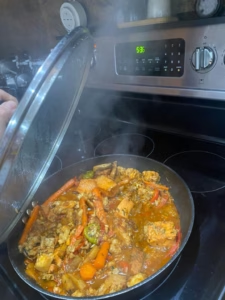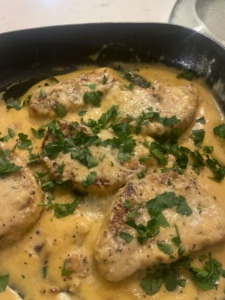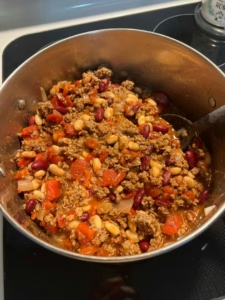White rice is a staple food in many cultures, and cooking it perfectly can be a simple yet intricate process. This guide will provide you with a detailed understanding of how to cook white rice.

Table of Contents:
- Introduction to Cooking White Rice
- Types of White Rice
- Rice to Water Ratio
- Different Cooking Methods
- Stovetop Method
- Boiling Method
- Microwave Cooking
- Oven Cooking
- Rice Cooker
- Step-by-Step Guide to Cooking White Rice
- Importance of Rinsing Rice
- Flavoring and Seasoning White Rice
- Health Benefits of White Rice
- Common Mistakes and How to Avoid Them
- Special Diets and White Rice
- Vegan
- Gluten-Free
- Low-Sodium
- Cultural Significance of White Rice
- Serving and Presentation Tips
- Storing and Reheating White Rice
- Pairing White Rice with Other Dishes
- Conclusion: Mastering the Art of Cooking White Rice
Introduction to Cooking White Rice
White rice, a staple food enjoyed across the globe, is more than just a simple grain. It’s a versatile ingredient that forms the foundation of countless dishes, from humble comfort food to gourmet culinary creations. Cooking rice may seem like a straightforward task, but it’s an art that requires precision, understanding, and a touch of creativity.
The Universality of White Rice
Firstly, white rice transcends cultural boundaries, finding its place in various cuisines, from the fragrant Jasmine rice of Thailand to the slender Basmati grains of India. It’s a common thread that weaves through the culinary fabric of nations, symbolizing sustenance, prosperity, and tradition.
The Anatomy of White Rice
Next, we explore the anatomy of white rice. It is the milled form of rice, where the husk, bran, and germ have been removed, leaving behind the starchy endosperm. This milling process gives white rice its characteristic color, texture, and flavor. The grains can vary in size, ranging from long and slender to short and plump, each with unique cooking properties.
The Importance of Cooking White Rice Right
Furthermore, cooking rice to perfection is a skill that can elevate a meal. Whether it’s the fluffy accompaniment to a rich curry or the sticky base for sushi, the texture and flavor of rice can make or break a dish. It’s not merely about boiling grains in water; it’s about understanding the type of rice, the right water-to-rice ratio, the cooking method, and even the way it’s served.
A Journey Through This Guide
Finally, this comprehensive guide aims to demystify the process of cooking rice. It will take you on a journey through the various types of white rice, the techniques to cook them, the cultural significance they hold, and much more. Whether you’re a home cook looking to master the basics or a seasoned chef exploring new culinary horizons, this guide offers insights and tips to help you cook rice with confidence and flair.
Types of White Rice
White rice is not a one-size-fits-all ingredient. Initially, you may notice that there are various types of white rice, each with unique characteristics. These differences not only influence their flavor and texture but also affect cooking methods. Ultimately, understanding these variations can enhance your culinary creations and allow you to choose the right type of rice for your specific dish.

1. Basmati Rice
Originating from the Indian subcontinent, Basmati rice is renowned for its fragrant aroma and long, slender grains. When cooked, it becomes fluffy and separate, making it an ideal choice for pilafs and biryanis.
2. Jasmine Rice
Moving on to Southeast Asia, Jasmine rice, a staple in Thai cuisine, has a subtle floral aroma and a slightly sticky texture. Consequently, it’s perfect for dishes that require the rice to hold together, such as stir-fries and Thai curries.
3. Arborio Rice
Shifting to Europe, famous for its use in Italian risottos, Arborio rice has short, plump grains with a high starch content. This starchiness creates a creamy texture when cooked, essential for classic risotto dishes.
4. Parboiled Rice
Next, parboiled rice undergoes a partial cooking process before milling, resulting in grains that are less sticky and more separate. It retains more nutrients compared to regular white rice and is often used in salads and casseroles.
5. Glutinous Rice (Sticky Rice)
Despite its name, glutinous rice is gluten-free. It’s known for its sticky texture when cooked and is commonly used in Asian desserts and sushi.
6. Calrose Rice
Transitioning to a medium-grain variety, Calrose rice becomes tender and slightly sticky when cooked. It’s versatile and used in various dishes, from sushi to rice bowls.
7. Texmati Rice
A cross between Basmati and long-grain American rice, Texmati offers the best of both worlds. It has the fragrance of Basmati and the texture of long-grain rice, suitable for a wide range of dishes.
8. Wild Pecan Rice
Lastly, with a nutty flavor and chewy texture, wild pecan rice is a unique variety often used in Southern American cooking. It pairs well with robust flavors like grilled meats and spicy sauces.
Rice to Water Ratio
The rice to water ratio is a critical factor in cooking rice to perfection. Initially, it determines the texture, consistency, and flavor of the cooked rice. Too much water can lead to mushy rice, while on the other hand, too little water may result in undercooked or burnt grains. Ultimately, understanding the correct ratio for different types of white rice is essential for achieving the desired outcome.

1. Basmati Rice
- Ratio: 1 part rice to 1.5-2 parts water
- Result: Fluffy, separate grains
- Note: Soaking for 30 minutes before cooking can enhance the texture.
2. Jasmine Rice
- Ratio: 1 part rice to 1.5 parts water
- Result: Slightly sticky, tender grains
- Note: Rinsing before cooking helps remove excess starch.
3. Arborio Rice
- Ratio: Gradual addition of liquid, usually 4 parts liquid to 1 part rice
- Result: Creamy, al dente texture
- Note: Used in risotto, where broth is added gradually while stirring.
4. Parboiled Rice
- Ratio: 1 part rice to 2.5 parts water
- Result: Separate, less sticky grains
- Note: No need to rinse before cooking.
5. Glutinous Rice (Sticky Rice)
- Ratio: 1 part rice to 1 part water
- Result: Very sticky, cohesive texture
- Note: Often soaked overnight and steamed rather than boiled.
6. Calrose Rice
- Ratio: 1 part rice to 1.25 parts water
- Result: Tender, slightly sticky grains
- Note: Suitable for sushi and rice bowls.
7. Texmati Rice
- Ratio: 1 part rice to 1.75 parts water
- Result: Fragrant, fluffy grains
- Note: Similar to Basmati but with a slightly different texture.
8. Wild Pecan Rice
- Ratio: 1 part rice to 2 parts water
- Result: Nutty, chewy texture
- Note: May require longer cooking time.
Different Cooking Methods
White rice can be prepared using various cooking methods, each offering unique results. Initially, the choice of method may depend on the type of rice you’re using. Subsequently, the desired texture and personal preferences come into play. Together, these factors guide the cooking process. Here’s a comprehensive guide to the different ways to cook rice, taking all these considerations into account:
Stovetop Method
Starting with the most traditional way, the stovetop method is commonly used to cook rice.
- How to Cook: Combine rice and water in a saucepan, bring to a boil, reduce heat, cover, and simmer until tender.
- Best For: Most types of white rice, especially long-grain varieties like Basmati.
- Result: Fluffy, separate grains.
Boiling Method
Next, the boiling method involves cooking rice in a large amount of water, similar to pasta.
- How to Cook: Boil rice in a large pot of water, cook until tender, then drain.
- Best For: Short and medium-grain rice, or when a more sticky texture is desired.
- Result: Slightly sticky, tender grains.
Microwave Cooking
For a quick and convenient method, cooking rice in the microwave is an option.
- How to Cook: Place rice and water in a microwave-safe dish, cover, and cook on high, stirring occasionally.
- Best For: Quick meals and small quantities of rice.
- Result: Fluffy rice, but may require some experimentation to get the perfect texture.
Oven Cooking
Alternatively, oven cooking allows for even heating and is great for large quantities.
- How to Cook: Combine rice and water in an oven-safe dish, cover with foil, and bake until tender.
- Best For: Cooking large batches of rice or for dishes like baked casseroles.
- Result: Evenly cooked, fluffy rice.
Rice Cooker
If automation is preferred, a rice cooker makes the cooking process foolproof.
- How to Cook: Add rice and water to the cooker, press the start button, and wait until it’s done.
- Best For: All types of white rice, especially when consistency is key.
- Result: Perfectly cooked rice with minimal effort.
Pilaf Method
Finally, the pilaf method involves sautéing rice before boiling, adding flavor.
- How to Cook: Sauté rice in butter or oil, add water or broth, and simmer until tender.
- Best For: Flavorful dishes like pilaf or biryani.
- Result: Fragrant, flavorful rice with a slightly chewy texture.
In conclusion, the method of cooking rice significantly influences its texture, flavor, and appearance. From the traditional stovetop method to the convenience of a rice cooker, each approach has unique benefits. Ultimately, understanding these methods empowers you to choose the best one for your dish, whether a simple side or a gourmet main course.
Step-by-Step Guide to Cooking White Rice
Cooking white rice is a fundamental culinary skill that can be mastered with the right guidance. Here’s a detailed step-by-step guide to cooking white rice using the traditional stovetop method, which can be adapted to other types of white rice and cooking methods.
1- Measure the Rice and Water
- Measure the Rice: First, use a measuring cup to get the exact amount of rice you need.
- Measure the Water: Next, refer to the specific rice-to-water ratio for the type of rice you’re using.
2- Rinse the Rice (Optional)
- Place Rice in a Strainer: Initially, use a fine-mesh strainer to prevent small grains from escaping.
- Rinse Under Cold Water: Then, rinse the rice until the water runs clear to remove excess starch.
3– Combine Ingredients
- Add Rice to the Pot: Start by using a saucepan or pot with a tight-fitting lid.
- Add Water: After that, pour in the measured water.
- Add Seasoning: Finally, add salt, butter, or other seasonings if desired.
4– Bring to a Boil
- Place on High Heat: First, cook uncovered until the water reaches a rolling boil.
- Watch Carefully: Then, keep an eye on the pot to prevent overflow.
5– Reduce Heat and Simmer
- Reduce Heat: Initially, lower the heat to a gentle simmer.
- Cover the Pot: Next, place the lid on the pot to trap steam.
- Simmer: Finally, allow the rice to simmer for the time specified for the type of rice.
6- Check for Doneness
- Check the Rice: First, carefully lift the lid and taste a grain to check if it’s cooked to your liking.
- Check the Water Level: If needed, you may add a little more water and continue cooking.
7- Fluff and Serve
- Remove from Heat: First, take the pot off the heat and let it rest for a few minutes.
- Fluff with a Fork: Then, gently fluff the rice with a fork to separate the grains.
- Serve: Finally, serve the rice hot, as a side dish or part of the main course.
Importance of Rinsing Rice
Rinsing rice before cooking is a step that’s often overlooked, but it plays a crucial role in the final texture and flavor of the cooked rice. Here’s an in-depth look at why rinsing rice is important and how to do it properly.
Why Rinse Rice?
- Removes Excess Starch: First and foremost, rinsing rice washes away the surface starch that can cause the grains to stick together, resulting in a gummy texture.
- Eliminates Impurities: Additionally, it helps remove any dust, debris, or unwanted particles that may be present in the rice.
- Enhances Flavor: Beyond that, by removing excess starch, rinsing can make the rice taste cleaner and allow the natural flavor to shine through.
- Improves Texture: Finally, rinsing leads to individual, separate grains that are desired in many dishes, especially with long-grain varieties like Basmati.
How to Rinse Rice
- Choose the Right Strainer: First, use a fine-mesh strainer that will hold the rice without letting the grains escape.
- Place Rice in the Strainer: Next, measure the rice and pour it into the strainer.
- Rinse Under Cold Water: Then, hold the strainer under cold running water, gently agitating the rice with your fingers or a spoon.
- Shake Off Excess Water: After that, once the water runs clear, shake the strainer to remove any excess water.
- Proceed with Cooking: Finally, follow your recipe, using the rinsed rice.
When to Rinse Rice
- Always Rinse: Long-grain rice, like Basmati and Jasmine, to achieve separate, non-sticky grains.
- Sometimes Rinse: Medium-grain rice, depending on the desired texture.
- Rarely Rinse: Short-grain or glutinous rice when a sticky texture is desired, such as for sushi or certain desserts.
Flavoring and Seasoning White Rice
White rice, while delicious on its own, can be elevated to new culinary heights with the right flavoring and seasoning. This section explores various ways to infuse rice with flavors, turning it from a simple side dish into a flavorful component of a meal.
1. Cooking in Broth or Stock
- How to Use: Replace water with chicken, beef, or vegetable broth.
- Result: Rich, savory flavor that complements main dishes.
2. Adding Herbs and Spices
- How to Use: Add whole or ground herbs and spices like bay leaves, cardamom, or cumin to the cooking water.
- Result: Fragrant, aromatic rice that can be tailored to different cuisines.
3. Using Aromatics
- How to Use: Sauté onions, garlic, or ginger in the pot before adding rice and water.
- Result: Subtle, complex flavors that add depth to the rice.
4. Infusing with Coconut Milk
- How to Use: Replace part of the water with coconut milk for a tropical twist.
- Result: Creamy, slightly sweet rice, perfect for Thai or Caribbean dishes.
5. Stirring in Butter or Oil
- How to Use: Stir in a pat of butter or a drizzle of olive oil after cooking.
- Result: Rich, luxurious texture and flavor.
6. Incorporating Citrus Zest
- How to Use: Add lemon, lime, or orange zest to the pot for a fresh twist.
- Result: Bright, citrusy flavor that pairs well with seafood or grilled meats.
7. Seasoning with Salt and Pepper
- How to Use: Season the cooking water with salt and finish with freshly ground pepper.
- Result: Classic seasoning that enhances the natural flavor of the rice.
8. Creating Saffron Rice
- How to Use: Steep saffron threads in hot water and add to the pot for a luxurious touch.
- Result: Golden-hued rice with a delicate, unique flavor.
In conclusion, flavoring and seasoning rice is an art that invites creativity. From the rich depth of broth-cooked rice to the exotic allure of saffron-infused grains, the possibilities are endless. By embracing these techniques, you can transform white rice into a dish that enhances the overall meal.
Health Benefits of White Rice
White rice, a staple food for over half of the world’s population, is more than just a source of energy. While it’s often overshadowed by its whole-grain counterpart, brown rice, white rice does offer several health benefits. Here’s an exploration of the nutritional value and health benefits of white rice:
1. Source of Energy
- Carbohydrates: White rice is primarily composed of carbohydrates, providing a quick source of energy.
- Easily Digestible: Its lack of fiber makes it easier to digest, especially for those with digestive issues.
2. Gluten-Free
- Suitable for Celiac Disease: White rice is naturally gluten-free, making it a safe option for those with gluten intolerance or celiac disease.
3. Low in Fat
- Heart-Healthy: Rice contains minimal fat, contributing to a heart-healthy diet when consumed in moderation.
4. Rich in Certain Vitamins and Minerals
- Folate: Many types of white rice are fortified with folate, essential for DNA synthesis and repair.
- Thiamin: Rice provides thiamin (Vitamin B1), necessary for energy metabolism.
5. Blood Sugar Management
- Low to Medium Glycemic Index: Depending on the type, white rice has a low to medium glycemic index, affecting blood sugar levels to varying degrees.
- Portion Control: Managing portion sizes can make white rice a part of a diabetes-friendly diet.
6. Versatility in Diets
- Adaptable: White rice can be incorporated into various dietary patterns, including vegetarian, vegan, and allergy-sensitive diets.
7. Potential Drawbacks
- Lower Fiber Content: Compared to brown rice, white rice has less fiber, which may impact digestive health if not balanced with other fiber sources.
- Nutrient Loss: The milling process removes some nutrients, but fortification and balanced dieting can mitigate this.
White rice, while simple, offers several health benefits, from providing quick energy to being a safe option for gluten-sensitive individuals. It’s a versatile and accessible food that can fit into various dietary needs and preferences. However, like all foods, moderation and balance are key. Pairing rice with nutrient-dense vegetables, lean proteins, and healthy fats can create a well-rounded, nutritious meal.
Common Mistakes and How to Avoid Them
Cooking white rice may seem simple, but it’s easy to make mistakes that can lead to less-than-perfect results. Here’s a look at some common mistakes people make when cooking white rice and how to avoid them:
1. Using the Wrong Rice-to-Water Ratio
- Mistake: Using too much or too little water.
- Solution: Refer to specific guidelines for the type of rice you’re using, and measure accurately.
2. Overcrowding the Pot
- Mistake: Cooking too much rice in a small pot, leading to uneven cooking.
- Solution: Choose a pot that allows the rice to expand without overcrowding.
3. Stirring the Rice Too Much
- Mistake: Constant stirring, which can break the grains and release excess starch.
- Solution: Resist the urge to stir; just let the rice simmer gently.
4. Skipping the Rinse
- Mistake: Not rinsing the rice, leading to sticky or gummy results.
- Solution: Rinse the rice until the water runs clear to remove excess starch (unless a sticky texture is desired).
5. Cooking at the Wrong Temperature
- Mistake: Cooking at too high or too low a temperature.
- Solution: Bring the water to a boil, then reduce to a simmer and cover.
6. Not Letting the Rice Rest
- Mistake: Serving the rice immediately after cooking, causing it to be wet or steamy.
- Solution: Remove from heat and let the rice rest, covered, for a few minutes to allow the remaining steam to continue cooking the rice.
7. Using the Wrong Pot or Lid
- Mistake: Using a pot with a loose-fitting lid, allowing steam to escape.
- Solution: Use a pot with a tight-fitting lid to keep the steam in, ensuring even cooking.
8. Neglecting Flavoring Opportunities
- Mistake: Cooking rice only in water, missing an opportunity to add flavor.
- Solution: Experiment with broths, herbs, spices, or aromatics to enhance the flavor.
9. Ignoring the Type of Rice
- Mistake: Treating all white rice the same, leading to inconsistent results.
- Solution: Understand the specific characteristics of the type of rice you’re using and adjust cooking methods accordingly.
Cooking white rice is an art that requires attention to detail and an understanding of the process. By recognizing common mistakes and learning how to avoid them, you can master the art of cooking white rice to perfection. Whether you’re a novice cook or a seasoned chef, these insights can help you achieve fluffy, flavorful rice every time.
Special Diets and White Rice
White rice is a versatile food that can be included in various special diets. Its neutral flavor and adaptable nature make it suitable for different dietary needs and preferences. Here’s how white rice fits into some common special diets:
Vegan Diet
- Compatibility: White rice is naturally vegan, containing no animal products.
- Pairing Ideas: Serve with plant-based proteins like tofu, lentils, or chickpeas, and a variety of vegetables for a balanced vegan meal.
Gluten-Free Diet
- Compatibility: White rice is naturally gluten-free, making it suitable for those with celiac disease or gluten sensitivity.
- Preparation Tips: Ensure that other ingredients used in cooking, such as broths or sauces, are also gluten-free.
Low-Sodium Diet
- Compatibility: Unseasoned white rice is low in sodium, fitting well into a low-sodium diet.
- Seasoning Alternatives: Use herbs, spices, or sodium-free broths to add flavor without adding salt.
Cultural Significance of White Rice
White rice holds a prominent place in various cultures around the world:
- Asian Cuisine: A staple in many Asian countries, white rice is central to meals and culinary traditions.
- Latin American Cuisine: Used in dishes like arroz con pollo or paired with beans, white rice is a key component in Latin American cooking.
- Middle Eastern Cuisine: Featured in dishes like pilaf, white rice is often flavored with spices and paired with meat and vegetables.
Serving and Presentation Tips
White rice, while often served as a simple side dish, can be presented in ways that elevate its appearance and appeal. Here are some tips for serving and presenting white rice:
- Use a Mold: For an elegant presentation, pack rice into a small cup or mold and invert onto the plate.
- Garnish: Additionally, add a sprinkle of fresh herbs, sesame seeds, or a drizzle of sauce for color and flavor.
- Serve with a Rice Paddle: In some cultures, a special rice paddle or spoon is used for serving, adding authenticity.
- Pair with Complementary Dishes: Furthermore, consider the main dish and choose a presentation that complements it visually and flavor-wise.
- Use Appropriate Tableware: Lastly, select bowls or plates that suit the style of the meal, whether casual or formal.
Storing and Reheating White Rice
Proper storage and reheating of cooked white rice are essential for maintaining its quality:
- Refrigeration: Firstly, store in an airtight container in the refrigerator for up to 4-6 days.
- Freezing: For longer storage, freeze in portion-sized containers for up to 6 months.
- Reheating: When ready to eat, reheat thoroughly on the stovetop with a little added water or in the microwave, ensuring it’s steaming hot.
Pairing White Rice with Other Dishes
White rice, with its mild flavor and adaptable texture, serves as a blank canvas for a myriad of dishes. Consequently, it can be paired with a wide variety of flavors and cuisines. Here’s a guide to pairing white rice with other dishes, enhancing the overall dining experience:
Meat and Poultry
- Stir-Fries: White rice pairs beautifully with meat or poultry stir-fries, absorbing the rich sauces and complementing the textures.
- Grilled Items: Likewise, grilled chicken, beef, or pork can be served over white rice, allowing the smoky flavors to shine.
Seafood
- Curries: In the realm of seafood, white rice is a classic accompaniment to seafood curries, providing a balance to the spicy and robust flavors.
- Grilled or Pan-Seared: Additionally, grilled or pan-seared fish pairs well with white rice, especially when accompanied by a tangy sauce or fresh herbs.
Vegetables and Plant-Based Options
- Vegetable Stir-Fries: For a vegetarian option, white rice can be paired with a colorful vegetable stir-fry, creating a nutritious and satisfying meal.
- Tofu and Tempeh: Furthermore, tofu and tempeh dishes, seasoned with Asian-inspired sauces, make excellent pairings with white rice.
Soups and Stews
- Hearty Stews: On the comforting side, white rice adds substance to hearty meat or vegetable stews, soaking up flavors and adding a comforting texture.
- Light Soups: Conversely, a small scoop of white rice in a light broth can add interest and a pleasant bite.
International Cuisines
- Asian Dishes: Naturally, white rice is a staple in many Asian cuisines, from sushi to fried rice to Thai curries.
- Latin American Flavors: Similarly, white rice is often served with beans, grilled meats, and salsas in Latin American dishes.
In summary, white rice’s versatility in pairing with various dishes is a testament to its universal appeal. From hearty meats to fresh seafood, vibrant vegetables to international flavors, white rice serves as a unifying element on the plate.
Conclusion: Mastering the Art of Cooking White Rice
In conclusion, mastering the art of cooking white rice is a journey that encompasses understanding different types, cooking methods, flavoring techniques, and more. From the initial rinse to the final fluff, each step in cooking white rice is an opportunity to create something delicious and satisfying.
Moreover, white rice’s role in global cuisine reflects its adaptability and timeless appeal. Whether serving as a simple side or the foundation of a gourmet creation, white rice is a culinary constant that nourishes and delights.
By embracing the insights and techniques presented in this comprehensive guide, you can elevate your white rice dishes to new culinary heights. Whether you’re a home cook exploring new recipes or a professional chef seeking to refine your skills, this guide offers a pathway to perfecting the art of cooking white rice.
Ultimately, here’s to the endless possibilities and culinary adventures that await with white rice – a humble grain with extraordinary potential.





